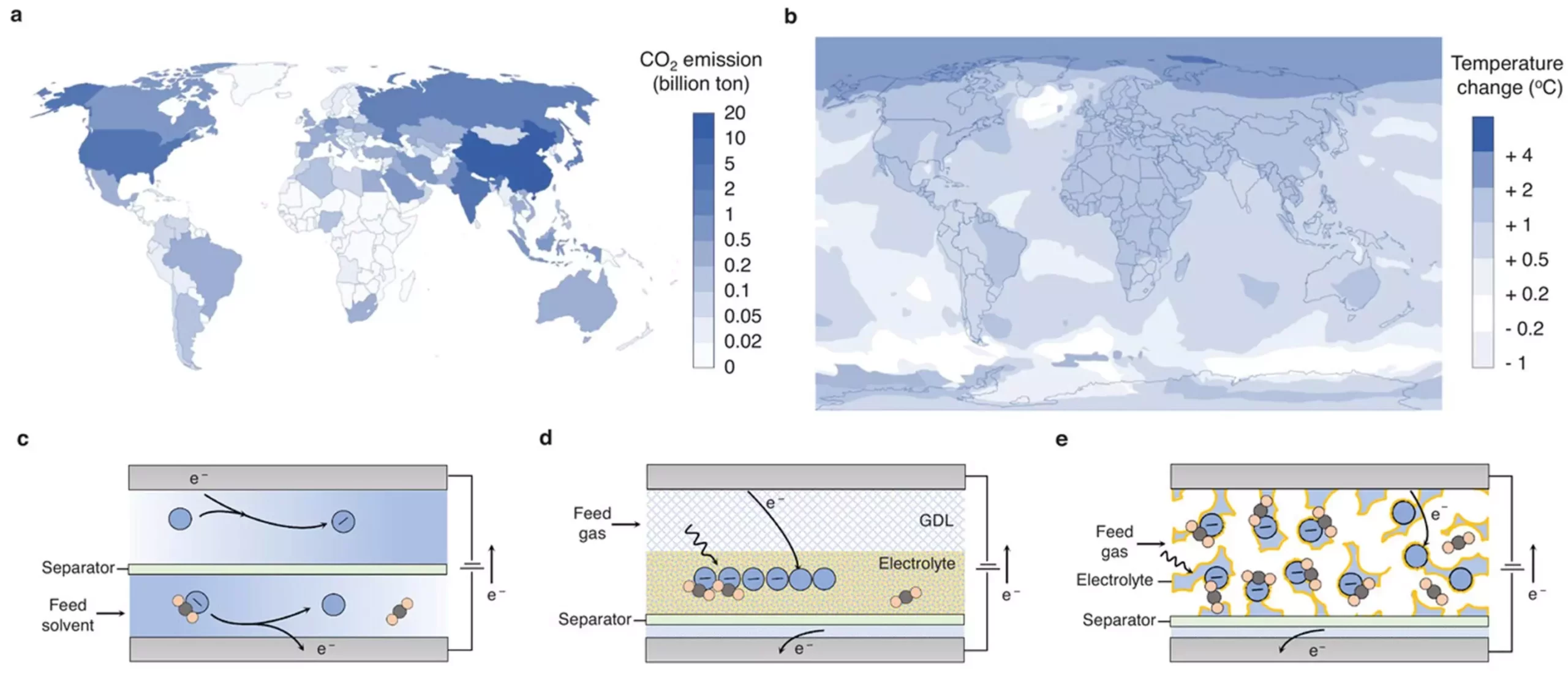Climate change continues to pose one of the most severe threats to our planet, urging scientists and researchers to seek innovative solutions for mitigating its impacts. In a remarkable development, a team of researchers has introduced a pioneering material that promises to optimize the process of carbon dioxide (CO2) capture. Published in the prestigious journal Advanced Materials, the study signifies a critical advancement in the realm of environmental technology, showcasing the potential of porous polymeric electrodes (PPEs) in revolutionizing how we tackle carbon emissions.
At the heart of this breakthrough lies a unique combination of readily available materials. The research, spearheaded by Professor T. Alan Hatton, focused on melamine foam which has been ingeniously coated in polyvinyl alcohol and enriched with carbon nanotubes and quinone molecules. This multifaceted structure not only augments the efficiency of CO2 capture but also enhances the interaction between the CO2 gas and the electrode material. Such structural innovations are pivotal, as they directly contribute to improved gas transport and maximize the active surface area available for CO2 interaction.
One of the standout features of these new electrodes is their superb performance metrics, achieving a groundbreaking CO2 capture capacity between 30 to 80 kg per cubic meter per day. This capacity marks a substantial improvement over existing technologies and highlights the electrodes’ efficacy in extracting CO2 from low-concentration sources. Moreover, the electrodes demonstrated outstanding stability across more than 100 capture-release cycles, affirming their long-term viability in real-world conditions, which often include humidity—a common challenge for carbon capture systems.
The implications of this development extend beyond mere laboratory success. The porous design negates the need for separate gas diffusion layers, thus paving the way for more compact and economical carbon capture systems. With demonstrated effectiveness in capturing CO2 directly from the air and dilute gas streams, the PPEs showcase potential applications ranging from direct air capture initiatives to industrial emissions reduction. As nations strive for net-zero emissions, the scalability and efficiency of PPEs might prove beacons of hope in the battle against climate change.
Future Directions and Challenges Ahead
Despite these promising results, the journey towards large-scale implementation is fraught with challenges. Researchers acknowledge the necessity for further optimization under diverse operating conditions and the need to scale up production effectively. Collaborating with industries and governments can facilitate the transition from prototype to practical application. As highlighted in the latest Intergovernmental Panel on Climate Change (IPCC) reports, effective carbon capture technologies have become urgent necessities. The innovative advancement represented by these porous polymeric electrodes could lay the groundwork for more sustainable ecological practices.
The introduction of porous polymeric electrodes into the realm of carbon capture technology is a testament to the human spirit of innovation. As we confront the pressing realities of climate change, the research conducted by this dedicated team serves as a reminder of our collective responsibility to seek out solutions. With further development and support, this innovative material could significantly bolster efforts to draw down atmospheric CO2 levels, making strides towards a more sustainable and resilient future for our planet.

